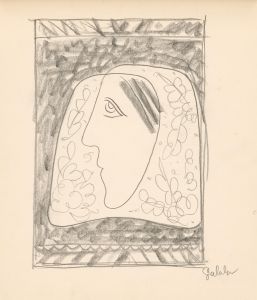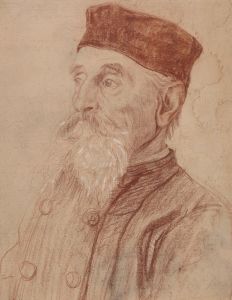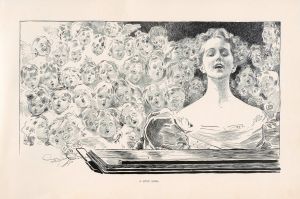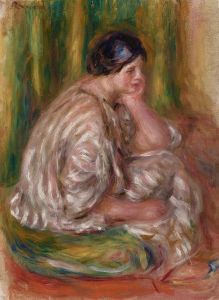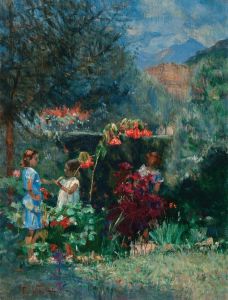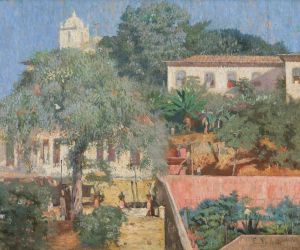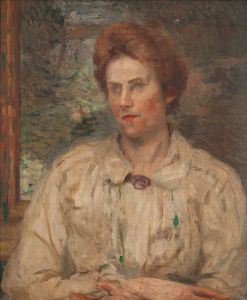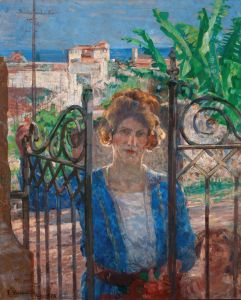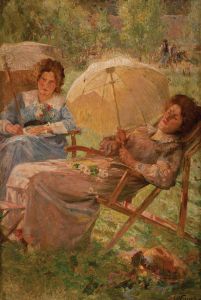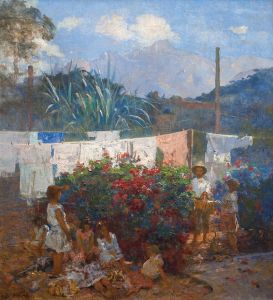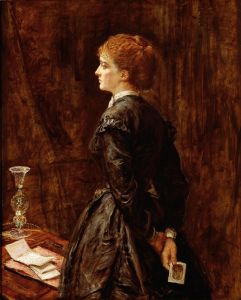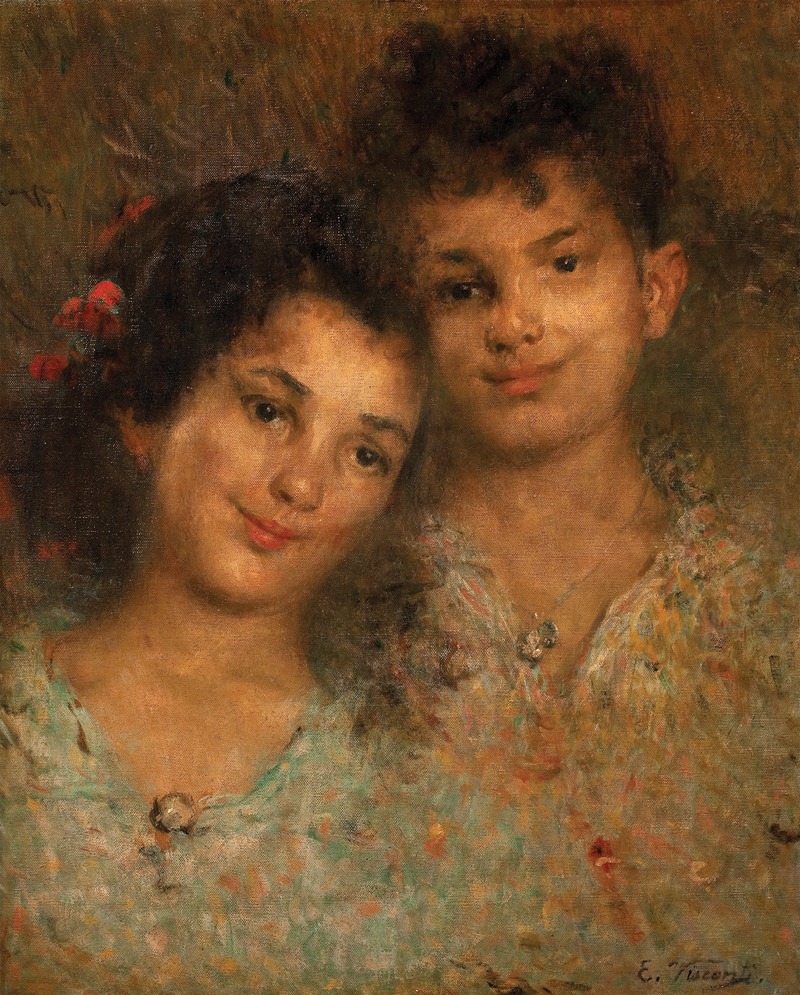
Alédia e Crispim
A hand-painted replica of Eliseu Visconti’s masterpiece Alédia e Crispim, meticulously crafted by professional artists to capture the true essence of the original. Each piece is created with museum-quality canvas and rare mineral pigments, carefully painted by experienced artists with delicate brushstrokes and rich, layered colors to perfectly recreate the texture of the original artwork. Unlike machine-printed reproductions, this hand-painted version brings the painting to life, infused with the artist’s emotions and skill in every stroke. Whether for personal collection or home decoration, it instantly elevates the artistic atmosphere of any space.
Eliseu Visconti, a prominent Brazilian artist, created the painting "Alédia e Crispim" in the early 20th century. Visconti is renowned for his contributions to Brazilian art, particularly in the realms of Impressionism and Art Nouveau, and his works often reflect a blend of European artistic influences and Brazilian themes.
"Alédia e Crispim" is a testament to Visconti's skill in portraiture and his ability to capture the essence of his subjects with sensitivity and detail. The painting features two figures, presumably named Alédia and Crispim, though specific historical information about these individuals is not widely documented. Visconti's choice of subjects often included family members, friends, or individuals from his social circle, which suggests a personal connection to the figures depicted.
The composition of "Alédia e Crispim" is characterized by its delicate use of color and light, hallmarks of Visconti's style. His technique often involved soft brushstrokes and a keen attention to the interplay of light and shadow, creating a sense of depth and realism. This approach is evident in the way the figures are rendered, with a focus on their expressions and the subtle nuances of their attire and surroundings.
Visconti's work during this period was influenced by his studies in Europe, particularly in France, where he was exposed to the Impressionist movement. This influence is apparent in "Alédia e Crispim" through the painting's emphasis on capturing a moment in time and the emotional resonance of the scene. The use of light, in particular, reflects the Impressionist fascination with natural illumination and its effects on color and form.
In addition to his technical prowess, Visconti was known for his ability to infuse his works with a sense of narrative and emotion. "Alédia e Crispim" likely conveys a story or relationship between the two figures, inviting viewers to ponder their connection and the context of the scene. This narrative quality is a significant aspect of Visconti's oeuvre, as he often sought to create works that were not only visually appealing but also rich in meaning and context.
Eliseu Visconti's contributions to Brazilian art extend beyond his paintings. He played a crucial role in the development of the country's artistic identity, participating in various exhibitions and influencing a generation of artists. His works are celebrated for their beauty, technical skill, and the way they bridge European artistic traditions with Brazilian culture.
"Alédia e Crispim" remains an important piece within Visconti's body of work, exemplifying his mastery of portraiture and his ability to convey complex emotions through art. While specific details about the painting's subjects may be limited, the work continues to be appreciated for its aesthetic qualities and its place within the broader context of Visconti's artistic legacy.





